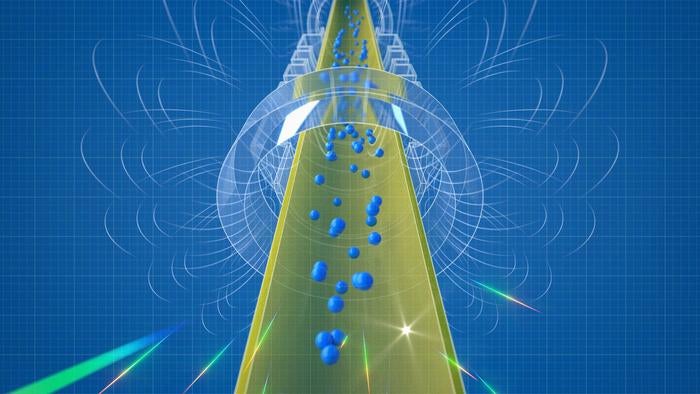One of world’s greatest physics mysteries finally decoded
‘Right now, we don’t have an explanation about where all the antimatter in the universe is’
Physicists have answered the long-standing question of whether antimatter falls up or down under gravity, an advance that could help crack one of the biggest mysteries of why almost everything in the universe is only made of matter.
The new study, published in the journal Nature on Wednesday, found that antimatter falls downwards under gravity – as expected by much of the scientific community,
Antimatter is made of particles possessing the opposite electric charge as ordinary particles.
For instance, the antimatter equivalent of the negatively charged electron is the positron, and the two annihilate each other to produce gamma radiation if they collide.
One of the strangest mysteries of the universe, scientists have observed, is that almost all the visible matter in the universe is made of ordinary matter and not antimatter.
“Right now, we don’t have an explanation about where all the antimatter in the universe is. To find a solution for this conundrum, what we do is test the elements of the physics of antimatter to see if we can find an inconsistency,” study co-author Robert Thompson from the University of Calgary in Canada said.
In the new study, scientists assessed the gravitational characteristics of antihydrogen – the simplest atom in antimatter that mirrors hydrogen.
Matter dropped from any height on Earth accelerates towards the planet’s surface at the constant rate of about 9.8m/s each second – a mathematical constant used in physics calculations, known as acceleration due to gravity g.
Now, with the latest groundbreaking study, physicists say, this value for antihydrogen – accounting for errors in the experiment – “is consistent with a downward gravitational acceleration of 1g” or about“32 feet per second per second”.

The experiment, which has never been done before, is a milestone in physics marking “a leap forward” in the world of antimatter research, they say.
Researchers used the new ALPHA-g apparatus in operation at CERN – Europe’s largest physics laboratory.
In the experiment, physicists created antimatter and trapped the neutral antihydrogen atoms in a magnetic bottle, making the environment as cold as possible.
They then released the antihydrogen within the vertical apparatus to witness and measure its gravitational behaviour under free-fall.
Scientists observed the physical properties of the antihydrogen by making precise measurements, including of its charge and colour spectrum.
The milestone study is the first step in taking precise measurements of the gravitational properties of antimatter to determine whether antimatter falls in the exact same way as matter.
“Here we show that antihydrogen atoms, released from magnetic confinement in the ALPHA-g apparatus, behave in a way consistent with gravitational attraction to the Earth,” scientists wrote in the study.
Researchers have also ruled out “repulsive ‘antigravity’” in this case – findings that can help better understand the lack of antimatter observed in the universe.
“We know there’s a problem somewhere in quantum mechanics and gravity. We just don’t know what it is. There has been a lot of speculation on what happens if you drop antimatter, though it’s never been tested before now because it’s so hard to produce and gravity is very weak,” Timothy Friesen, another author of the study, said.
The new finding, according to scientists, allows for more precise studies of the magnitude of the acceleration of anti-atoms under the influence of Earth’s gravitational force.
Join our commenting forum
Join thought-provoking conversations, follow other Independent readers and see their replies
Comments


Bookmark popover
Removed from bookmarks